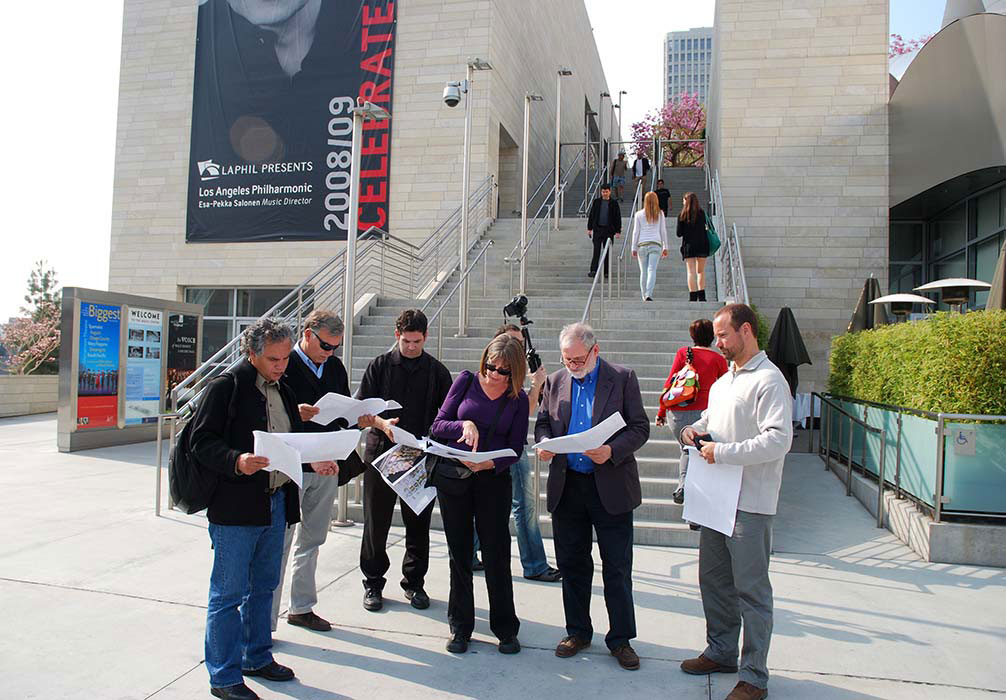Research
To date the GCI has undertaken research into the:
- Critical challenges in the conservation of historic cities in order to assess needs and identify gaps in the existing body of knowledge related to this area of work
- Use of public-private and third sector partnerships in conserving the historic urban environment
- Role of contemporary architecture in the historic environment
Research into the critical issues affecting the conservation of the historic urban environment
Our past collaboration with the OWHC has provided the GCI team with the opportunity to discuss the issues that decision makers in historic cities are facing, as well as to exchange ideas on the experiences of municipalities on the projects they have conducted. This combined with other information, such as reports presented by ICOMOS or IUCN to the World Heritage Committee on the state of conservation of historical centers inscribed on the World Heritage list—has helped to identify major challenges in this complex field of conservation. This research, together with an analysis of its results by a March 2009 GCI-organized meeting of experts (including specialists in the conservation of historic cities, urban planners, and economists), will lead to greater awareness of the needs in the field, an identification of gaps in the body of knowledge, and an understanding of how and where to best contribute to the field.
The research commenced with an examination of international charters and of the evolving concept of the preservation of historic cities and ensembles; in addition, GCI staff examined the current body of academic and professional literature, reviewed applicable case studies, and compiled a list of relevant organizations. A survey of heritage professionals and decision makers was then undertaken on the current problems they are facing in the preservation of historic cities.
The review of significant international charters and declarations, such as the 1962 Charter of Venice, the 1975 Declaration of Amsterdam, the 1996 Istanbul Declaration on Human Settlements, and the 2005 Vienna Memorandum, provided a better understanding of the way in which the international conservation community approaches historic cities and urban settlements. In general, the conceptualization of historic cities and urban settlements has progressed in the last thirty years from considering primarily the physical and tangible aspects of a historic city to including a city's intangible social, cultural, and economic values. Notably, all heritage charters stress the need for conservation to be coherently and completely integrated within a nation's or municipality's urban development plans, as well as the importance of enforcement and regulation of these plans.
In order to identify the current challenges facing the conservation of the historic urban environment, the GCI reviewed a number of case studies taken from the ICOMOS Heritage at Risk database and other sources. Although further research must be conducted before reaching definitive conclusions, this preliminary review revealed thematic similarities in the issues facing historic cities and urban settlements. These include uncontrolled or large-scale development, abandonment of historical districts, inappropriate urban uses, discontinuity in the urban fabric, alteration of the urban landscape, and deficient management practices. Regional, environmental, socio-economic, and cultural differences create unique situations for each place, but the issues and responses shared by historic cities supersede these variations and highlight collective challenges and effective responses to them. Chief among the challenges are the problems caused by a lack of governmental or administrative authority over conservation activities, particularly when faced with development pressures for new construction and a dearth of financial and educational resources. Corresponding needs include rigorous and transparent governance with well articulated and administered legislation and policy (at all levels of government), and interdepartmental coordination, educational programs for youths and adults, and established guidelines for urban development and the appropriate reuse of historic structures. Case studies have been particularly insightful in detailing the successes and failures of conservation efforts—or the results of the absence of such efforts.
The GCI has also conducted research into key players, institutions, and organizations active in the conservation of historic cities and urban settlements. It has identified groups of stakeholders, ranging from local NGO's to international institutions that have demonstrated experience and expertise in a specific field of work, region, or subject area pertinent to the conservation of historic cities and urban settlements, such as housing or economic development.
Experts Meeting
On March 11-14, 2009, a selected group of practitioners from around the world gathered at the GCI to share ideas and experiences regarding their work in historic cities. Coming from diverse geographic and professional backgrounds—including conservation, urban planning, anthropology, economics, and government—the group discussed the complex and interconnected issues facing historic cities today. The aim of the meeting was to identify the field's most pressing needs and the gaps in current international attention to these needs. The findings from the meeting (PDF, 29pp., 385KB) will help to guide the GCI's efforts to improve the conservation of historic cities and urban settlements.
Research into the role of public-private and third sector partnerships in conserving the historic urban environment
Between 2009 and 2012, the GCI undertook research into the role that public, private and third sector are increasingly playing in the conservation of cultural heritage. This desk-based research examined the available literature on this subject and culminated in the publication of a research report entitled The Role of Public-Private Partnerships and the Third Sector in Conserving heritage Buildings, Sites and Historic Urban Areas.
Research into the role of contemporary architecture in the historic urban environment
This current research based project began with an international Symposium in 2013 and was followed in 2015 with the publishing of Contemporary Architecture in the Historic Urban Environment; An Annotated Bibliography. It examines the critical issue of how to address the inevitable insertion of new work into the urban landscape in a way that is appropriate to its significance.
Page updated: September 2015

